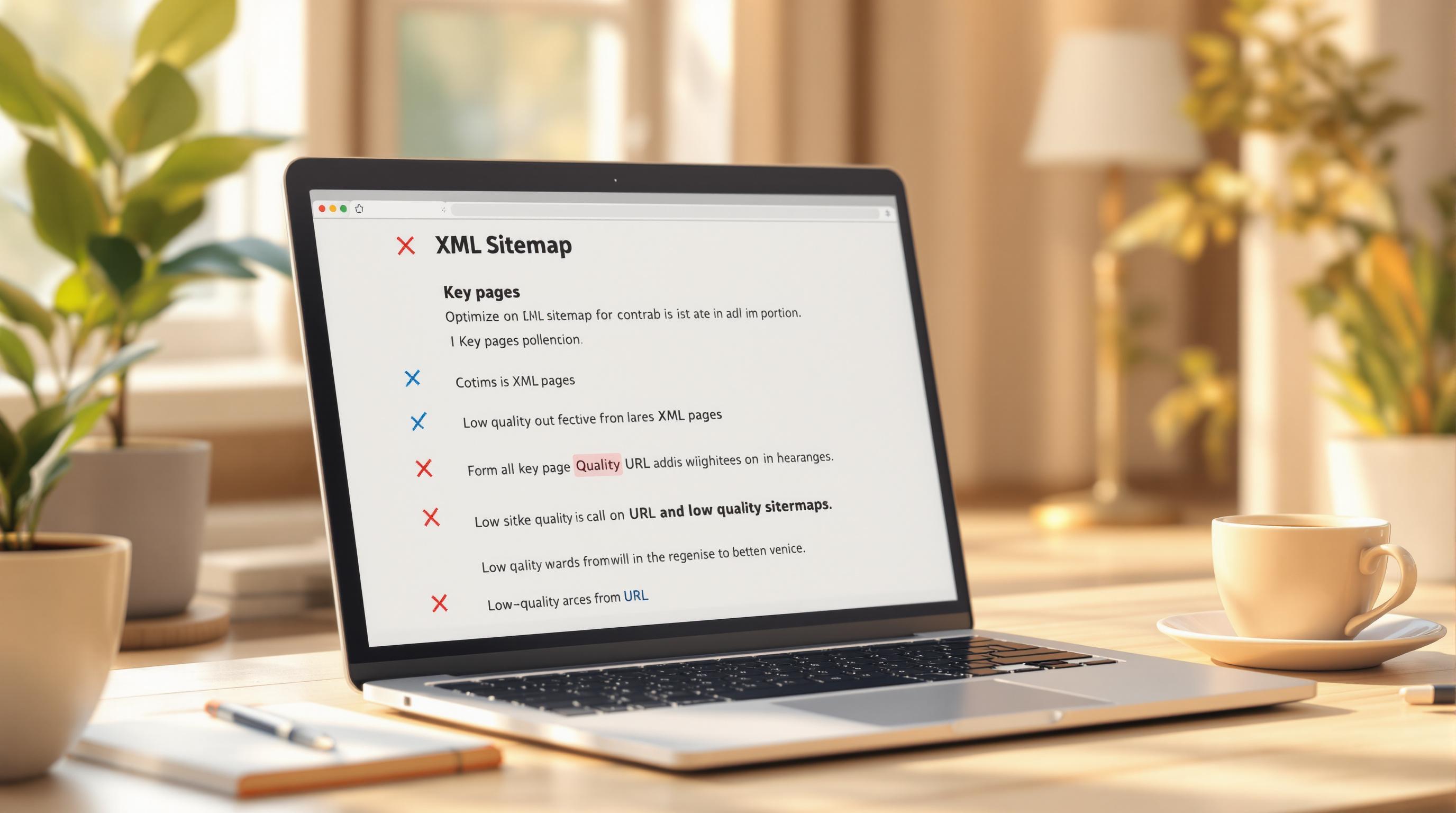To improve your local SEO and attract more customers, focus on these 5 key performance indicators (KPIs):
- Review Quantity and Velocity: Track how many reviews you get and how quickly they come in. Consistent review activity boosts visibility and trust.
- Average Star Rating: A strong rating impacts rankings and customer decisions. Keep an eye on trends for improvement.
- Review Response Rate: Respond to at least 75% of reviews. Engaging with feedback builds trust and signals active management to search engines.
- Review Source Diversity: Spread reviews across platforms like Google, Yelp, and Facebook to strengthen your online presence.
- Positive vs. Negative Review Ratio: Maintain a healthy balance. A few negative reviews can show authenticity, but a majority should be positive.
Quick Comparison Table
| KPI | Why It Matters | Key Focus Area |
|---|---|---|
| Review Quantity/Velocity | Boosts ranking and trust | Steady, consistent review flow |
| Average Star Rating | Impacts visibility and decisions | High, genuine ratings |
| Review Response Rate | Builds trust and engagement | Responding to most reviews |
| Review Source Diversity | Expands online presence | Reviews on multiple platforms |
| Positive vs. Negative Ratio | Reflects customer satisfaction | Balance of positive feedback |
Monitor these KPIs regularly to improve rankings, attract more customers, and refine your strategy.
What Key Performance Indicators (KPIs) Should I Track For Local Reviews? - SearchEnginesHub.com
1. Review Quantity and Velocity
Review quantity refers to the total number of reviews your business has, while review velocity measures how quickly those reviews are coming in. Together, these metrics give a clear picture of how effective your review strategy is.
Having a large number of reviews fosters trust, and a steady stream of fresh reviews signals ongoing customer engagement. These two factors are critical for building local SEO success and earning customer confidence. Let’s dive into how review quantity and velocity impact search rankings, customer trust, operational insights, and overall local SEO performance.
Impact on Local Search Rankings: Boosting visibility through review activity
Search engines, especially Google, rely on review signals as a key factor when ranking local businesses. Both the total number of reviews and their recency play a role in determining how your business ranks in local search results.
Businesses that consistently collect reviews tend to outperform those with irregular review activity. Why? Regular reviews suggest your business is active and engaging with customers. The algorithm sees this as a marker of legitimacy and relevance.
While the ideal review velocity varies by industry, most successful local businesses aim for 4-6 new reviews per month. For highly competitive sectors, like restaurants or salons, maintaining a higher review velocity is often necessary to stay ahead.
Influence on Customer Trust and Reputation
When it comes to customer trust, the math is simple: more reviews generally mean more credibility. Even if individual star ratings vary, a higher volume of reviews typically reassures potential customers.
But there’s a fine line. If reviews come in too quickly, it might look suspicious and raise questions about their authenticity. On the other hand, a very slow review rate could make your business seem stagnant or less active.
Identifying Areas for Improvement
Tracking review velocity can uncover valuable insights about your business operations. For example, if you notice a sudden drop in review activity after making changes to your services or processes, it could point to a drop in customer satisfaction - or even inefficiencies in how you’re requesting reviews.
By analyzing review velocity alongside other business metrics, you can better understand what drives customer feedback and address any emerging issues before they escalate.
Relevance to Local SEO Optimization
Review quantity and velocity don’t just help with rankings - they also make your business more appealing to searchers. Listings with higher review counts and visible star ratings tend to attract more clicks, which can give your business an edge in competitive search results.
Fresh reviews also contribute keyword-rich content that search engines can index, further enhancing your local SEO efforts.
For businesses with multiple locations, monitoring review velocity at each site can uncover areas that need attention. Locations with consistently low review activity often struggle with weaker local search performance, making it essential to fine-tune your review strategy for those specific areas.
2. Average Star Rating
After review quantity and speed, the average star rating plays a crucial role in shaping how customers perceive your business and impacts your SEO performance. It's often the first thing potential customers notice and serves as a key metric for local search rankings and decision-making.
Impact on Local Search Rankings
Google's local search algorithm factors in review ratings when deciding which businesses to highlight in search results. In competitive markets, keeping a high and genuine average rating can improve your visibility significantly. A solid rating profile not only gets you noticed but also encourages more clicks.
Influence on Customer Trust and Reputation
Star ratings act as a quick indicator of a business's quality and dependability. Customers are more likely to trust businesses with a strong, well-rounded rating. However, a rating that's too perfect can sometimes raise doubts about authenticity.
Identifying Areas for Improvement
Keep an eye on your average star rating for any changes that might point to deeper issues. By analyzing feedback across different locations or service offerings, you can identify specific areas that need attention and make targeted improvements.
Relevance to Local SEO Optimization
A strong average star rating doesn’t just build trust - it also strengthens your local SEO and improves your visibility in search results. Actively responding to feedback and encouraging reviews can help you stay ahead of the competition. Up next, we’ll dive into how your review response rate fits into your overall review strategy.
3. Review Response Rate
Your review response rate measures the percentage of customer reviews you reply to. It’s calculated by dividing the number of reviews you respond to by the total number received, then multiplying by 100. For example, if you reply to 40 out of 50 reviews, your response rate is 80%.
Impact on Local Search Rankings
Search engines like Google view review engagement as a sign of active business management and a commitment to customer service. A high response rate - typically above 75% - shows strong engagement, which can positively influence your local search rankings.
Influence on Customer Trust and Reputation
According to a BrightLocal survey, 89% of consumers prefer businesses that respond to reviews, compared to just 7% who favor those that don’t engage at all. Prompt responses demonstrate transparency and a customer-first approach, which helps build trust and enhances your reputation.
Identifying Areas for Improvement
Responding to reviews - whether they’re glowing, critical, or neutral - offers valuable insights into your business operations. By analyzing recurring feedback themes, you can uncover areas needing attention. Prioritizing responses to negative or neutral reviews shows accountability and provides an opportunity to resolve issues publicly, which can make a lasting impression on potential customers.
Relevance to Local SEO Optimization
Your review response rate plays a critical role in local SEO. A study by Harvard Business Review revealed that hotels responding to reviews saw a 12% increase in review volume and a 0.12-star boost in average ratings. Additionally, businesses that reply to at least 25% of reviews experience an average 12% improvement in conversion rates from Google Business Profile interactions. Engaging with reviews not only encourages more feedback but also leads to better ratings and customer conversions.
Top-performing businesses often aim for a 100% response rate, ideally within 24 to 48 hours, especially for Google Business Profile reviews. Using analytics tools can help you monitor and improve your response metrics effectively.
Next, we’ll dive into the importance of review source diversity and how it can refine your local SEO strategy.
sbb-itb-5be333f
4. Review Source Diversity
Once you've tracked review quantity, star ratings, and response rates, the next step is to focus on diversifying your review sources. This approach strengthens your local SEO strategy by ensuring customer feedback is spread across multiple platforms.
Review source diversity refers to the distribution of customer reviews across platforms such as Google Business Profile, Yelp, Facebook, industry-specific sites, and even your own website. By monitoring where your reviews come from, you can avoid relying too heavily on a single platform.
Impact on Local Search Rankings
Search engines prioritize businesses with reviews on multiple platforms because it reflects genuine customer interactions and minimizes the risk of manipulated feedback. Spreading reviews across various channels creates a wider digital presence, which search algorithms may interpret as a sign of active and authentic business operations. This diversity also safeguards your local SEO performance in case one platform experiences technical issues or policy changes.
Influence on Customer Trust and Reputation
Customers rarely stick to one platform when researching a business. Some prefer social media for reviews, while others trust industry-specific or well-known review sites. By maintaining high-quality reviews across a range of platforms, you can appeal to a broader audience and build trust with potential customers, regardless of where they choose to look.
Identifying Areas for Improvement
Each platform tends to attract unique types of feedback. For instance, one site might highlight detailed comments about your customer service, while another could focus on convenience or community involvement. This variety provides valuable insights into what you're doing well and where you might need to improve. By analyzing feedback from different platforms, you can refine your strategies to better meet customer expectations.
Relevance to Local SEO Optimization
A diverse review strategy contributes significantly to local SEO by creating multiple opportunities for potential customers to find your business. Positive reviews across different platforms enhance your visibility in search results and encourage referrals. To maximize your local search performance, focus on gathering quality reviews on key platforms like Google Business Profile, social media, and industry-specific sites. The goal isn’t just to collect more reviews but to maintain consistent quality across all channels, which ultimately strengthens your online credibility.
Next, explore how the balance between positive and negative reviews influences local SEO and customer acquisition.
5. Positive vs. Negative Review Ratio
Keeping an eye on the balance between positive and negative reviews offers a deeper understanding of customer sentiment. This metric goes beyond just counting stars - it helps you spot patterns in customer satisfaction and highlights areas where your business is thriving or needs attention.
Successful local businesses typically maintain a strong majority of positive reviews. While the "perfect" ratio may differ by industry, having a few negative reviews can actually lend credibility by showing authentic customer experiences. Regularly tracking this ratio is essential for evaluating the effectiveness of your review management strategy.
Impact on Local Search Rankings
Review sentiment can play a role in how search engines rank your business locally. A steady stream of positive feedback signals consistent customer satisfaction, which can boost your visibility in local search results. Essentially, a strong review profile can work in your favor when it comes to local SEO.
Influence on Customer Trust and Reputation
Customers often judge a business based on the balance of its reviews. A profile dominated by positive feedback - sprinkled with the occasional negative review - can feel both impressive and authentic. Over time, improving your review ratio shows potential customers that you’re attentive and committed to making things better.
Ability to Identify Areas for Improvement
Tracking changes in your review ratio can reveal important trends. A drop in positive reviews might point to emerging issues with your products or services, while an increase could confirm that recent changes are paying off. You might also notice seasonal patterns or challenges during busy times. These insights can guide your operational improvements and even influence your SEO strategies.
Relevance to Local SEO Optimization
A strong positive-to-negative review ratio doesn’t just build trust with customers - it can also boost your local SEO. Search engines favor businesses with solid review profiles, and customers are more likely to engage with businesses that show they care about feedback. Encouraging happy customers to leave reviews and addressing negative ones quickly helps create a profile that enhances both your reputation and search visibility.
KPI Comparison Table
Here’s a detailed comparison of five key performance indicators (KPIs) to help refine your local SEO review strategy. The table below outlines the benefits, challenges, and ideal use cases for each KPI.
| KPI | Primary Benefits | Key Drawbacks | Best Use Case |
|---|---|---|---|
| Review Quantity and Velocity | Shows trends in review volume and customer engagement; helps track campaign effectiveness | Vulnerable to fake reviews; doesn't reflect review quality or sentiment | Tracking the success of review generation campaigns and comparing performance over time |
| Average Star Rating | Simple to interpret and strongly influences customer decisions | Lacks context on customer experiences; can be skewed by a few extreme reviews | A quick indicator of overall customer satisfaction and for competitive comparisons |
| Review Response Rate | Highlights a commitment to customer service and builds trust with potential customers | Time-consuming to manage and requires ongoing effort; may not directly affect rankings | Strengthening customer relationships and demonstrating that feedback is valued |
| Review Source Diversity | Reduces reliance on a single platform; provides broader insights and minimizes risks from platform changes | More challenging to monitor across multiple platforms; requires advanced tracking tools | Building a balanced online presence and mitigating risks tied to platform-specific issues |
| Positive vs. Negative Review Ratio | Tracks customer sentiment trends, identifies operational issues, and adds credibility when balanced | Needs deeper analysis to uncover root causes; can be misleading without full review context | Managing long-term reputation and spotting areas for business improvement |
Each KPI plays a unique role in enhancing your local search visibility. For quick wins, focus on review response rate and review quantity. For a more sustainable strategy, prioritize review source diversity and the positive-to-negative review ratio. If you're working with limited resources, start with the average star rating and review response rate for maximum impact.
Use this table as a roadmap to identify priority areas and drive growth in your review management efforts.
Conclusion
Keeping an eye on review metrics like quantity, velocity, average star rating, response rate, source diversity, and the balance of positive to negative reviews can transform your local SEO strategy into a well-oiled, data-driven machine. These insights help you identify what’s working, what’s not, and where to focus your efforts to improve both your online reputation and search rankings.
Here’s a compelling stat: businesses with more than 82 total reviews see 54% higher annual revenue than average, and just a one-star boost on Yelp can increase revenue by 5–9%. Instead of trying to tackle everything at once, zero in on the key metrics that need attention. For example, if your review velocity is slow, consider targeted campaigns to encourage more customer feedback. If your response rate is under 80%, training your team or using automated tools could make a noticeable difference.
These metrics aren’t just numbers - they’re actionable insights. By regularly monitoring them, you can spot trends early, address potential issues before they snowball, and maximize your strengths to draw in more local customers.
With 97% of consumers reading online reviews for local businesses, having a solid review strategy isn’t optional - it’s essential. Using these KPIs as your guide, you can strengthen your online presence, climb higher in local search rankings, and ultimately drive more customers and revenue to your business.
Need help tracking and improving these metrics? Resources like the Top SEO Marketing Directory offer tools and expert advice to help you refine your strategy and boost your local SEO results. Leverage these tools to turn your insights into measurable success.
FAQs
How can businesses maintain a natural review flow to avoid raising red flags with search engines?
To maintain a natural and genuine review flow, focus on gathering reviews gradually over time rather than experiencing sudden spikes. A steady stream of feedback not only reflects real customer engagement but also avoids raising red flags with search engines, which are skilled at spotting unusual activity patterns.
It's equally important to encourage a variety of feedback from your customers. If reviews start to sound repetitive or feature overly similar phrasing, they might come across as less authentic. By promoting honest and unique interactions, you can strengthen trust with both search engines and your potential customers.
How can businesses increase the variety of platforms where they gather customer reviews?
To broaden the reach of customer feedback, businesses should encourage reviews across multiple platforms like Google, Yelp, Facebook, and industry-specific directories. This approach not only boosts your online visibility but also safeguards your reputation against changes in policies or the removal of reviews on any single platform.
When you gather reviews from a variety of sources, it helps build a more stable and well-rounded online presence. This can improve your local search rankings and enhance customer trust. To make the process straightforward, provide customers with clear instructions and direct links to leave reviews on these platforms.
How do positive and negative reviews together influence customer trust and business reputation?
A blend of both positive and negative reviews can go a long way in building trust with your customers and adding to your business's reputation. While a flood of glowing reviews might raise eyebrows and seem too good to be true, a handful of critical reviews - when addressed properly - can actually work in your favor. They show that your business is open, honest, and eager to improve.
People often see businesses with a mix of reviews as more genuine, which can influence their decision to buy. Thoughtful responses to negative feedback not only strengthen trust but also highlight your dedication to delivering great service.


